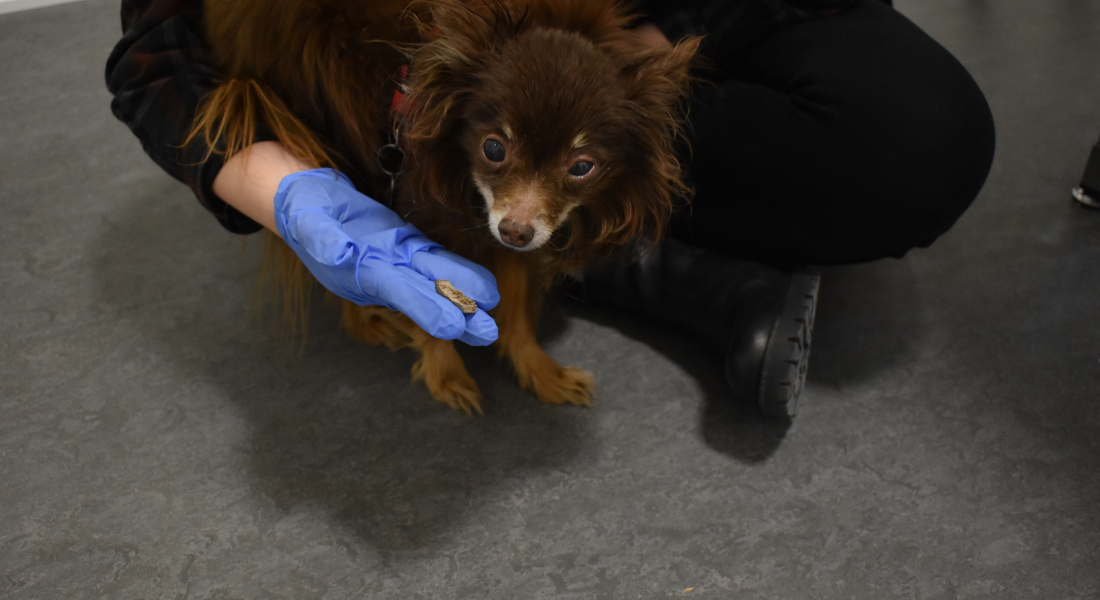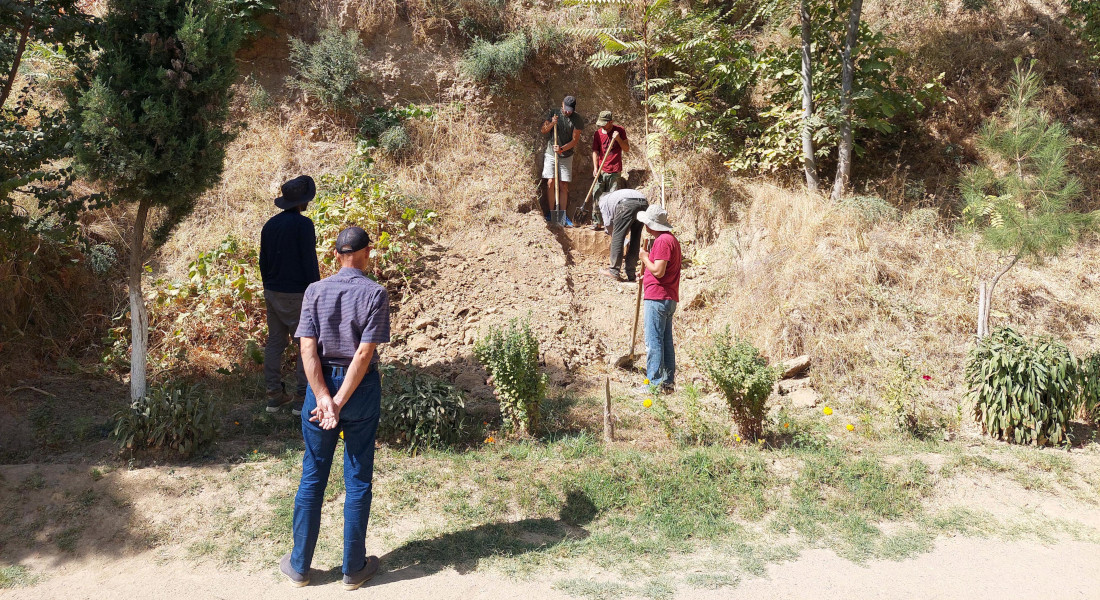Dog drool, bleach, and a Neanderthal child
Archaeological objects have often accumulated protein contamination over many years, from sources such as the burial ground, storage and handling. How do you remove such protein contamination prior to palaeoproteomic analysis, without damaging the ancient proteins? To explore this problem, we used a Pleistocene horse bone, a dog, and an ancient child’s tooth.

Removing contaminating proteins before analysing proteins in archaeological materials is important to avoid losing access to the low-abundance, highly fragmentary ancient proteins. Unfortunately there is no consensus on how to efficiently remove protein contamination without affecting the already damaged ancient proteins. To investigate the potential to remove protein contamination from archaeological objects, we used a somewhat unconventional method.
Enlisting the help of Tjorven, our resident office dog, we artificially contaminated a Pleistocene horse bone fragment with his saliva, skin and fur. This allowed us to approximate years of contamination with a complex proteome that was easily absorbed into the bone. We then examined the efficacy of five different methods for removing this contamination.
The results were very clear. We find that decontamination is necessary, as the reconstructed ancient horse bone proteome was negatively affected by the presence of dog proteins. In addition, we find that protein contamination can be removed by using one of the five tested methods, using a bleach wash, without damaging the ancient horse proteins. “I’m very happy that my collaborators were onboard with my unusual research idea - after all, it worked, and the office dog got to demonstrate his expertise in palaeoproteomics research as well!", says Dr. Zandra Fagernäs, Marie Skłodowska-Curie postdoctoral fellow at the Globe Institute, University of Copenhagen. "Sometimes, unconventional research designs, such as dog drool on an archaeological bone, can be highly informative. "
But does this method also work in a real-life situation? Initial studies of a child tooth from the Late Pleistocene site of Khudji (Tajikistan) found the tooth to be severely contaminated by human skin proteins, likely the result of decades of human handling since its discovery in 1997. "These situations of lots of modern protein contamination on Pleistocene human fossils are potentially rather common. They can really complicate our ability to obtain informative, endogenous ancient proteins", add Associate Professor Dr. Frido Welker. "When we applied a bleach wash to a small fragment from this tooth, we found that the vast majority of skin protein contamination is removed." What remains appears to be almost exclusively ancient protein fragments deriving from the tooth itself.

Recent archaeological excavations ongoing at Khudji, Tajikistan. Photo credit: Dr. Redzhep Kurbanov.
In collaboration with scientists from Tajikistan, we then set out to answer the major remaining question about the Khudji tooth - who did it belong to? In the Late Pleistocene, both modern humans and Neanderthals were present in Central Asia. Additionally, Denisovans were living in other parts of Asia, and the full extent of their distribution is unknown. There are therefore at least three different hominin groups that could have left behind this tiny tooth. We reconstruct 23 proteins from the tooth, covering over 3,600 amino acid positions, and compare them to protein sequences from modern humans, Neanderthals, and a Denisovan. This comparison shows that the tooth does not belong to a Denisovan and is unlikely to derive from a modern human. It therefore is most likely the tooth of a Neanderthal, although direct molecular evidence of this is needed in the future. Prof. Khujageldiev and Dr. Kurbanov, from the National Academy of Sciences of Tajikistan, add: "“New data obtained from the tooth from the Khudji are of great importance for understanding the ancient prehistory of Central Asia. Numerous Palaeolithic sites containing Palaeolithic artifacts have been discovered in the region, indicating multiple migrations of various hominin species. Human bones are poorly preserved in hot climates, so despite large-scale excavations, only 5 Palaeolithic sites with hominin fossils are currently known for Central Asia. The results of the joint research with colleagues from Denmark confirmed the likely presence of Neanderthals at the Khudji site and helps us to better understand the dynamic changes that occurred in the region about 40 thousand years ago."
The study is published in the Journal of Archaeological Science:
https://doi.org/10.1016/j.jas.2025.106228
Contact information
Dr. Zandra Fagernäs
University of Copenhagen
Denmark
+45 35 33 71 16
zandra.fagernas@sund.ku.dk
Dr. Frido Welker
University of Copenhagen
Denmark
+45 35 32 64 22
frido.welker@sund.ku.dk
Dr. Tura Khujageldiev
A.Donish Institute of History, Archaeology and Ethnography,
National Academy of Sciences of Tajikistan
Tajikistan
+992 93 149 4808
turaurun59@mail.ru
Dr. Redzhep Kurbanov
National Academy of Sciences of Tajikistan
Tajikistan
+7 926 4407292
roger.kurbanov@gmail.com
